12 Retro Images Show How America’s Grocery Stores Have Changed Through The Years
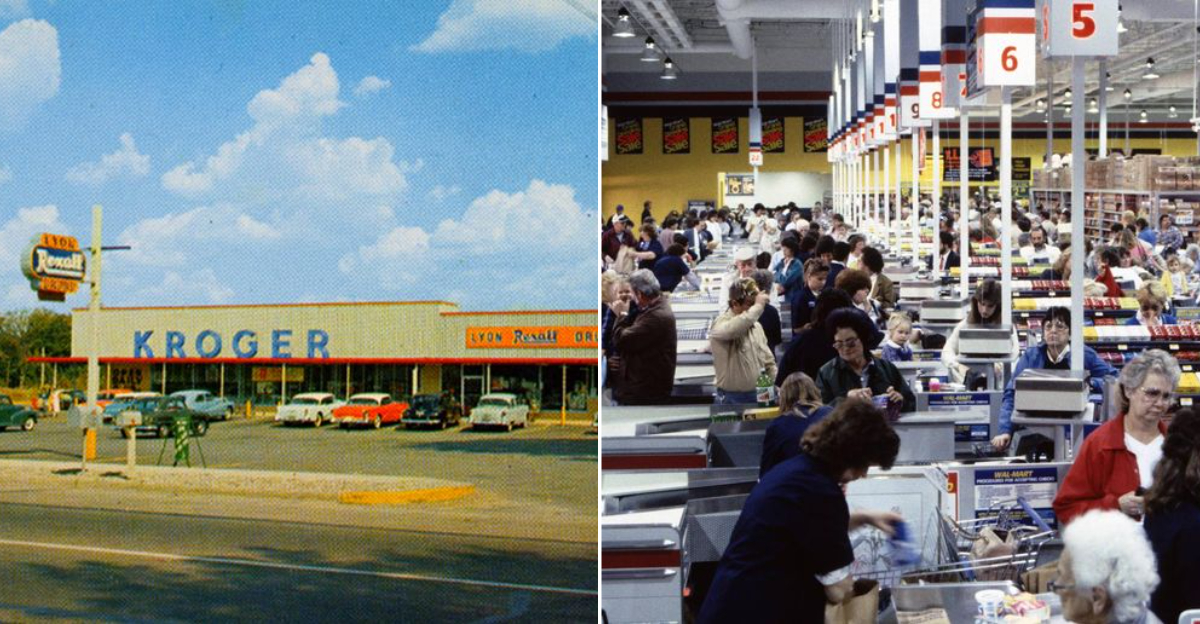
Grocery shopping today is fast, convenient, and—let’s be honest—a little impersonal.
Self-checkout machines beep at us, aisles overflow with endless choices, and delivery apps mean some people haven’t set foot in a store for years.
But it wasn’t always like this. Once upon a time, grocery shopping was an event. A social outing. A moment to chat with the butcher, admire the latest magazine covers, or marvel at the futuristic scanner that suddenly made handwritten price tags obsolete.
These 12 photos take us on a nostalgic trip through grocery stores of the past—when cash registers dinged, clerks actually bagged your groceries, and people went shopping in their Sunday best.
Let’s see just how much has changed!
1. Piggly Wiggly: Checkout Lanes in 1918
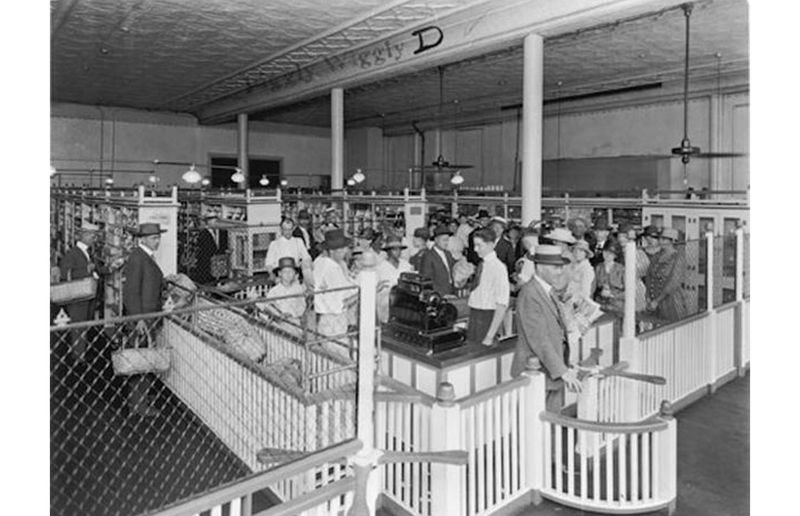
1918. A time when you didn’t push a cart—you handed a list to a store clerk, who scurried through the aisles collecting your items.
Then came Piggly Wiggly, the first self-service grocery store in America. No more waiting for a clerk—you could browse, pick out your own goods, and even compare prices. Revolutionary!
No more standing around while someone else picked your apples. Now, you could inspect them yourself. And so, the age of modern grocery shopping began.
2. Piggly Wiggly: Magazine Stands in 1959
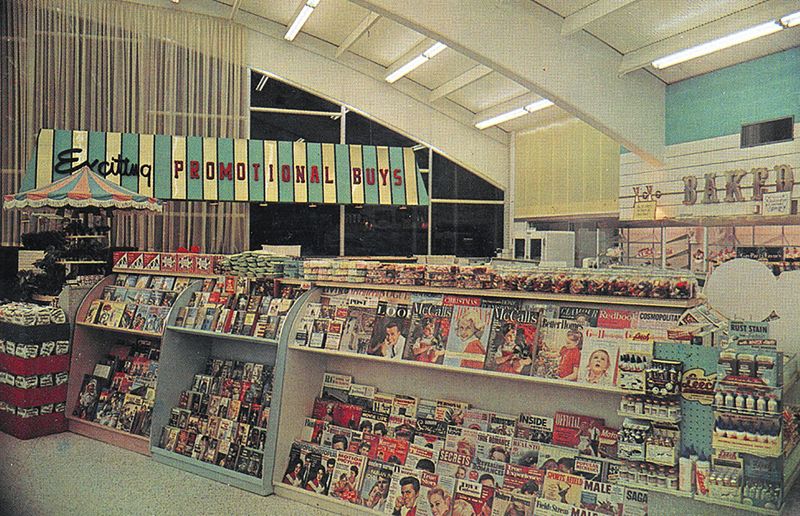
Fast forward to 1959, and grocery stores weren’t just about food—they were cultural hubs.
This photo captures a colorful Piggly Wiggly magazine stand, stacked with glossy covers featuring movie stars and breaking news.
Imagine: a well-dressed woman stands in front of the stand, flipping through pages, maybe looking for a dinner recipe, celebrity gossip, or the latest political scandal.
In a time before the internet, these magazines were the TikTok or X of their day—a gateway to entertainment, news, and trends.
3. Kroger: 1940s Storefront in Whitmore Lake, Michigan
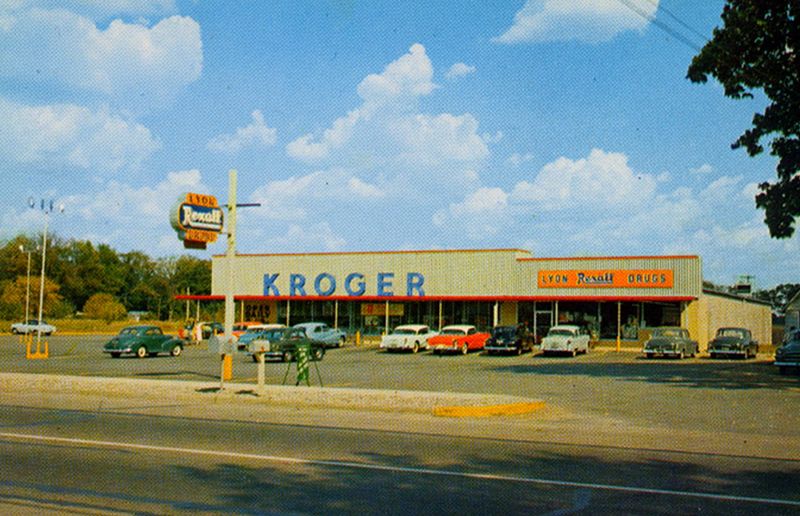
Before mega-chains and supercenters, grocery stores were the heart of communities.
This 1940s photo of a Kroger in Whitmore Lake, Michigan, tells the story of an era when shopping was personal. Neighbors greeted each other, chatted about local news, and actually knew the store employees by name.
In those days, grocery shopping wasn’t a chore. It was a social outing.
4. Kroger: Cars Outside the Supermarket in 1950
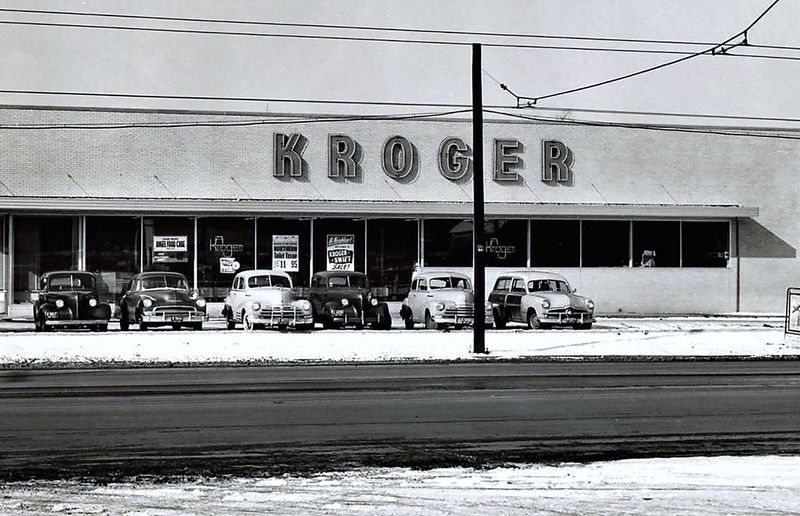
It’s 1950, and outside a Kroger supermarket, a lineup of stunning classic cars gleams in the parking lot.
This photo is pure nostalgia—a snapshot of a booming economy, suburban expansion, and a time when a trip to the grocery store was an event.
No dashing in for a last-minute carton of milk in sweatpants. Oh no. People dressed up to go shopping. Women in dresses and pearls, men in crisp slacks and fedoras. Grocery shopping had style.
5. Safeway: Woman Shopping in 1964
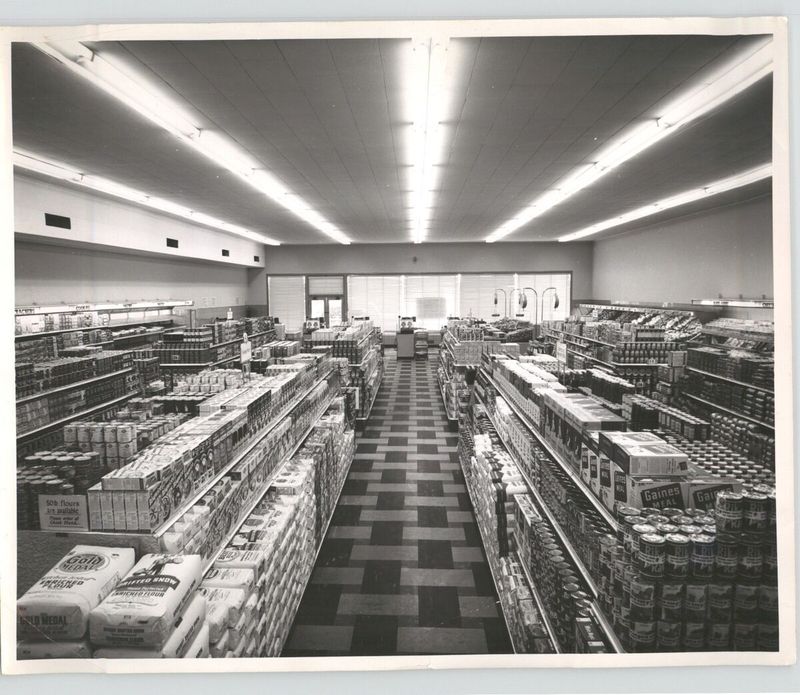
The 1960s redefined convenience—pre-packaged goods, frozen dinners, endless choices.
This 1964 photo of a fully stocked Safeway aisle reflects a world embracing faster, easier shopping. Shelves lined with colorful products promised efficiency, tempting shoppers with the latest must-haves. Can you imagine strolling through these aisles?
It was an era of change, where supermarkets weren’t just about food but about time saved, decisions made, and a new way of living.
6. Albertsons: Cheese Department in 1955
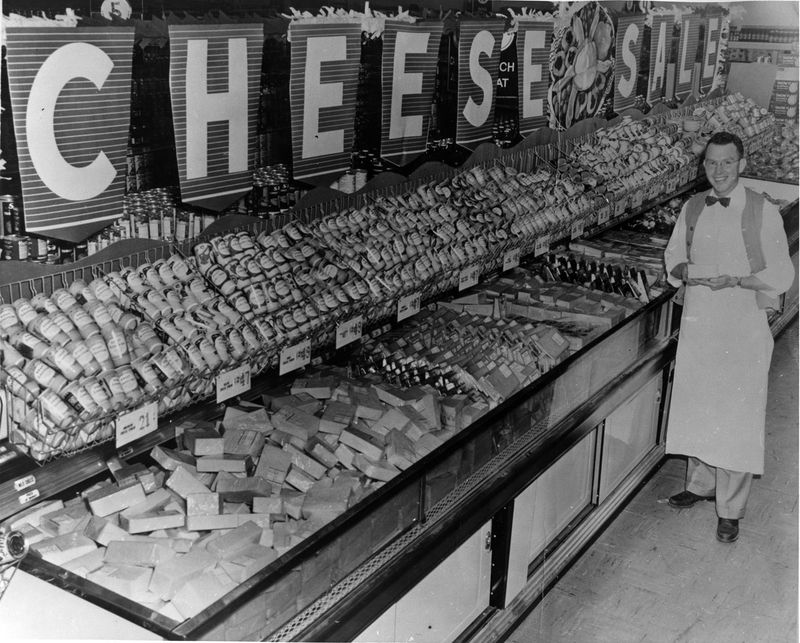
Today, we take massive cheese sections for granted. But in the 1950s, a supermarket selling a variety of cheeses was a big deal.
A smiling employee stands ready to help—back when personalized customer service was the norm.
It was an era of exploration. Americans were expanding their palates, dipping their toes into the world of imported flavors. Swiss? Gouda? Brie? Why not?
In a way, this little cheese counter was the beginning of America’s love affair with foodie culture.
7. Albertsons: Bakery in 1955
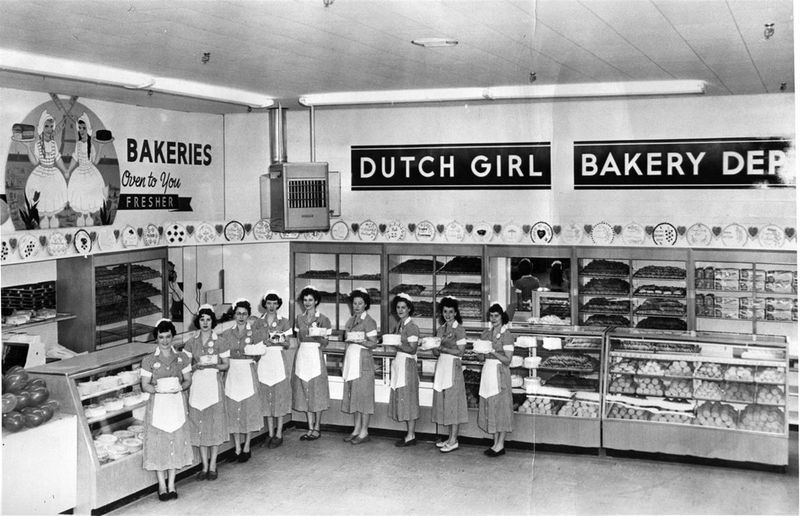
Before mass-produced bread dominated the shelves, grocery store bakeries meant something.
This 1955 photo from Albertsons shows bakers proudly presenting fresh loaves—crafted by hand, not by machines.
It’s a reminder of a time when people trusted the quality of what they bought. When bread wasn’t loaded with preservatives. When a good bakery was the heart of a neighborhood store.
Ah, the good old days. Can you almost smell it?
8. Walmart: The First Supercenter in 1988

And then, everything changed.
In 1988, Walmart opened its first supercenter—a behemoth of a store that combined groceries, clothing, electronics, and everything else you didn’t know you needed under one roof.
This photo captures that first store, a symbol of America’s shift toward bigger, faster, and cheaper.
One-stop shopping had arrived. Whether you loved it or hated it, there was no turning back.
9. Walmart: Supercenter Checkout Lanes in 1988
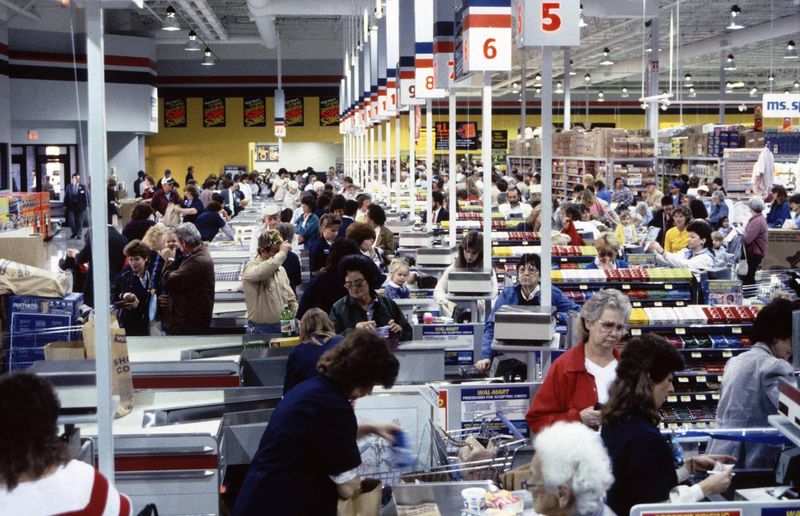
The checkout lines in Walmart’s first supercenter? Pure chaos.
This photo shows packed lanes, overloaded carts, and cashiers working at lightning speed. It was a sign of the times—Americans were buying more, spending more, consuming more.
The age of “just picking up a few things” was over. Now, a grocery trip meant stocking up like you were preparing for the apocalypse.
10. Wegmans: A Deli Counter in the 1970s
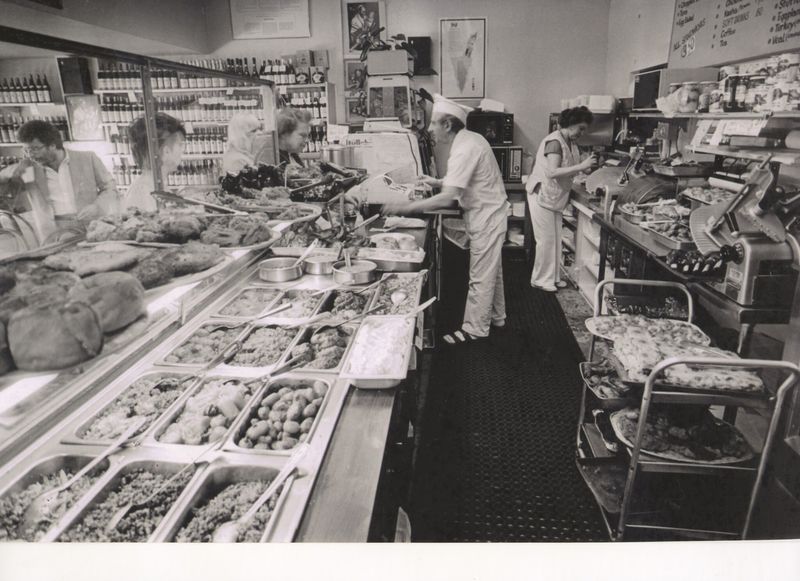
Before Publix and The Fresh Market, there was Wegmans—a U.S. supermarket renowned for its commitment to quality and exceptional customer service.
Founded in 1916, it set the standard for fresh ingredients and revolutionized the grocery shopping experience.
In the ‘70s, delis became the go-to spot for premium selections, offering a level of freshness that pre-packaged options couldn’t match. Wegmans led this shift, introducing European-style delis that elevated the art of fresh, handcrafted foods.
And let’s be honest—who doesn’t love a good deli sandwich?
11. Wegmans: UPC Scanning in the 1970s
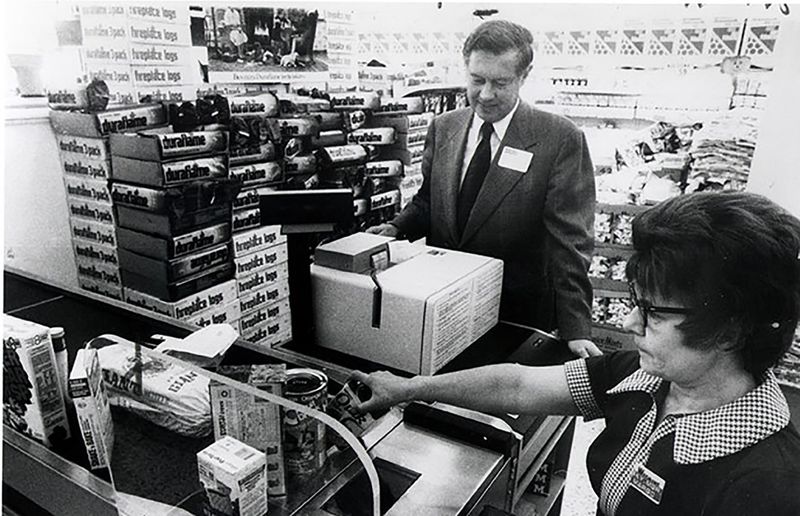
Before scanners, cashiers had to manually enter every single price. Imagine the lines. The mistakes. The frustration.
Then, UPC barcodes changed everything. This photo captures a historic moment—the introduction of one of the first scanning systems at Wegmans.
Faster checkouts, fewer mistakes, and, of course, the beginning of that beep sound we all know today.
12. Winn-Dixie: Lovett’s Meat Department in 1946
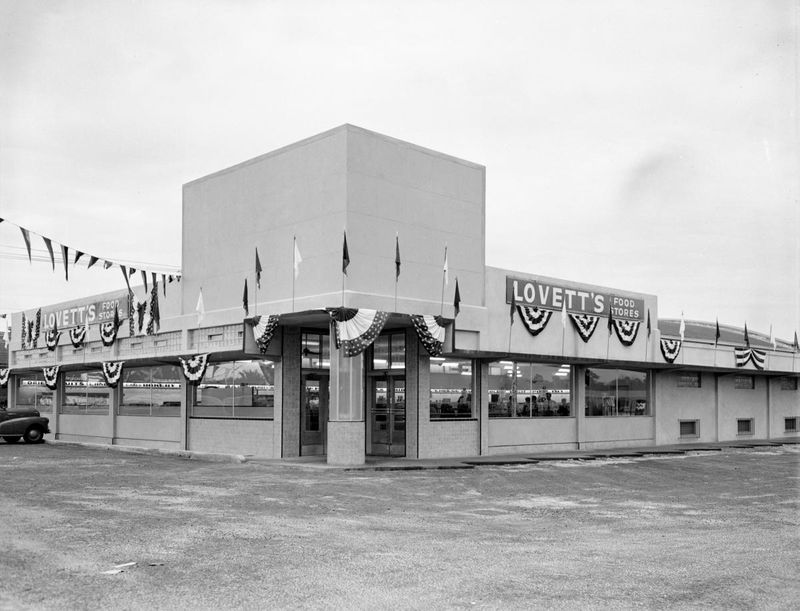
The butcher was the go-to expert for fresh meat, long before plastic-wrapped packages filled store shelves.
This 1946 photo from Winn-Dixie captures a time when every cut was prepared to order and carefully wrapped in brown paper.
No mystery cuts, no factory-processed selections—just a skilled butcher, quality meat, and a level of trust that feels rare today.
Would you prefer shopping this way?
